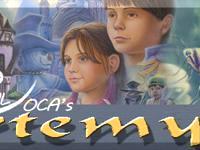8/10/25 |
You ever stare into the abyss and see a pair of fiberglass jaws staring back? I did. I was eight. Spielberg’s 'Jaws' had just hit the cultural bloodstream, and like a lot of people, I got bit. Not by the shark, but by the myth. This year marks half a century since that cinematic leviathan breached the surface of our collective psyche. Fifty years since Bruce, the mechanical shark with a soul of steel and a mouthful of metaphor, first thrashed his way into our dreams. And for me, it wasn’t just a movie. It was a baptism. Saltwater, fear, and storytelling all swirling together in one primal gulp. So what do you do when a childhood terror refuses to let go? You build it. You sculpt it. You make peace with it by giving it form. Not the polished, pixel-perfect predator of modern CGI. I went old school. I wanted the beast in its original form, bolts, gears, hydraulics and all. The kind of shark that breaks down mid-scene and forces a young Spielberg to invent suspense. That’s the Bruce I built. Why Bruce? Sure, you can buy a kit. There’s a company out there, StannArts, that’ll sell you a fine replica. But I wasn’t looking for a souvenir. I was looking for communion. I wanted to understand the architecture of fear. Could I design it myself? Could I print it, paint it, and maybe, just maybe, exorcise it? Turns out, I could. And it was glorious. My Process - Designing in 3D: I dove into reference photos like a marine biologist chasing a myth. Behind-the-scenes shots, skeletal diagrams, the whole enchilada. Piece by piece, I sculpted Bruce in digital clay, honoring his asymmetries like sacred scars. - Printing & Assembly: Over weeks, I printed the parts in batches. Each piece a meditation. The final model? Twenty-two inches of PLA plastic memory. Big enough to command attention, small enough not to eat a cat. - Painting & Finishing: Airbrush in one hand, childhood in the other. I gave Bruce his weathered skin, his muted menace. The eyes had to strike that balance between lifeless and too alive. That uncanny stare that says, “I’m not real, but I’m not safe either.” Funny thing, while I was building Bruce, I kept hearing echoes of my day job at Michael Curry Design. The way the parts moved, the internal logic of the beast, it was puppetry. It was spectacle. It was myth-making. Bruce wasn’t just a prop. He was a creature born of necessity and imagination. A mechanical monster with a heartbeat made of hydraulics. This wasn’t just nostalgia. It was alchemy. I took a fear that once lived in the shadows and gave it shape. Bruce became a symbol, not of sharks, but of the unknown. The uncontrollable. The edge of the map where the sea monsters live. And soon he will sit on my shelf ( as soon as I find the space). He is a trophy, not a warning, but a reminder. That sometimes, the things that haunt us are the very things that shape us. Maybe you’ve got a Bruce of your own, some childhood specter with teeth and torque. I say, don’t run. Build it. Understand it. And maybe you’ll find that the monster was never in the water. It was in the story. 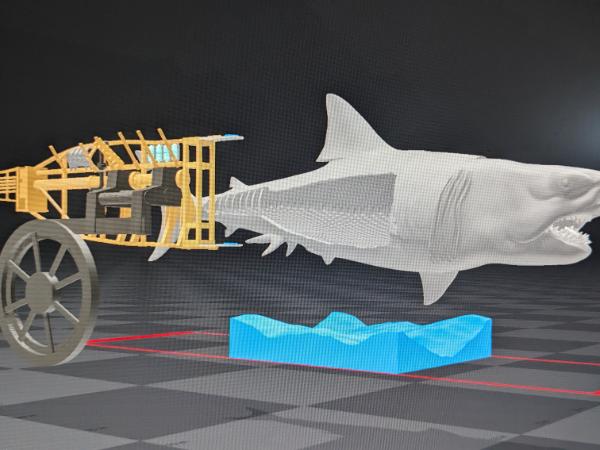 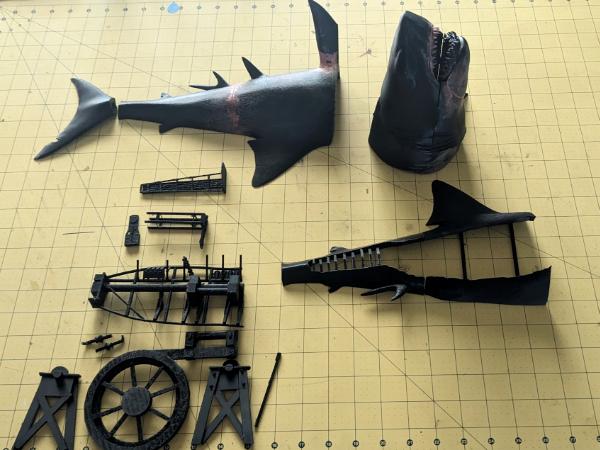 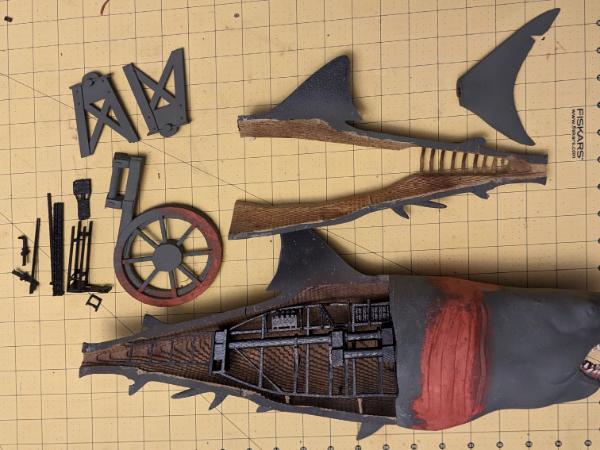 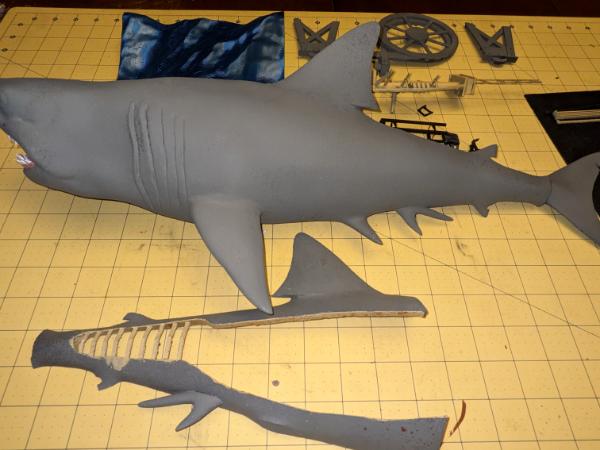 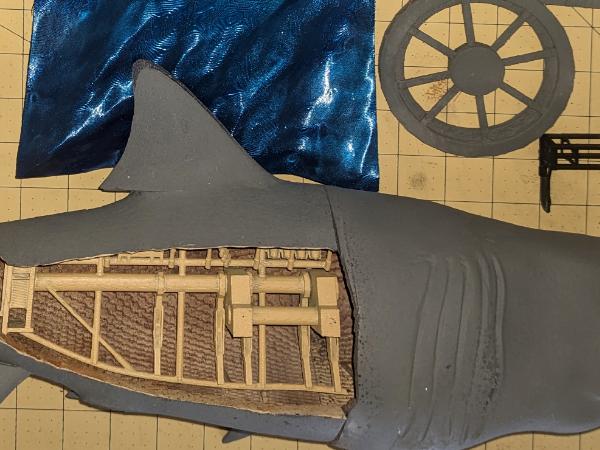 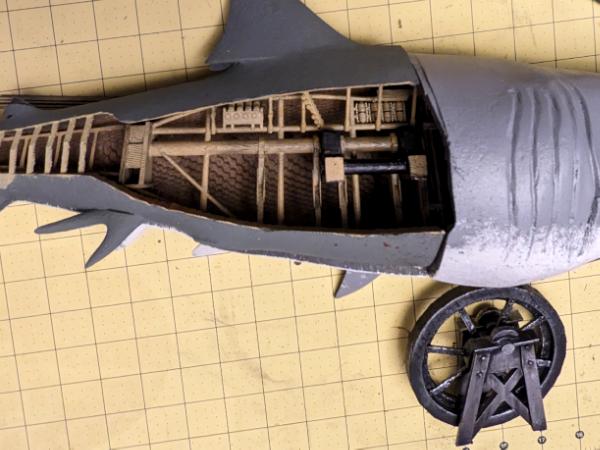 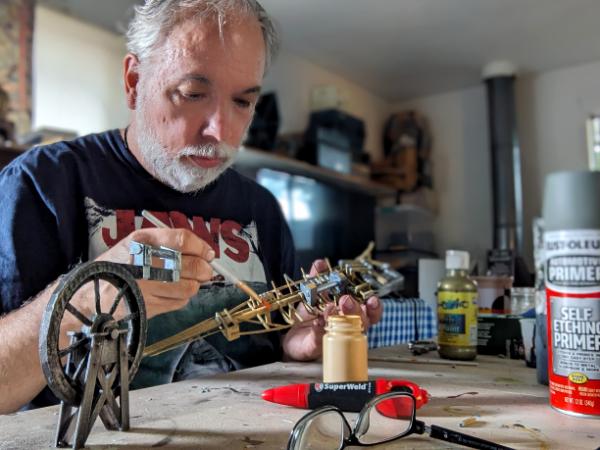 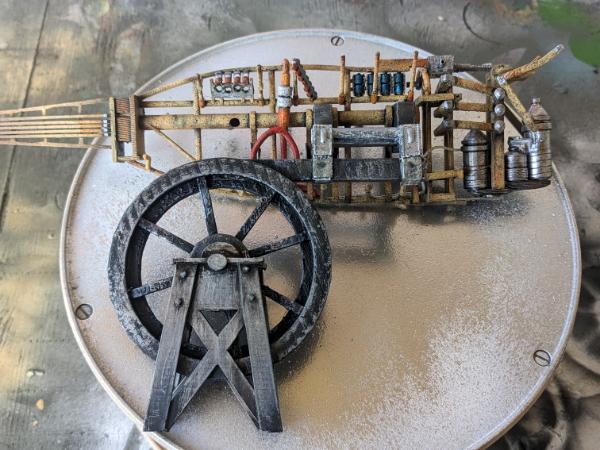 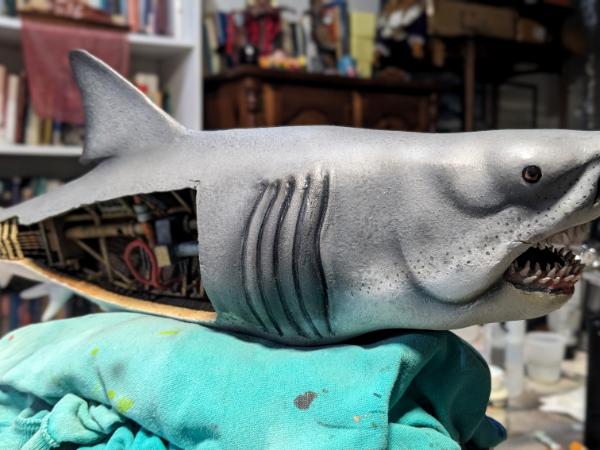 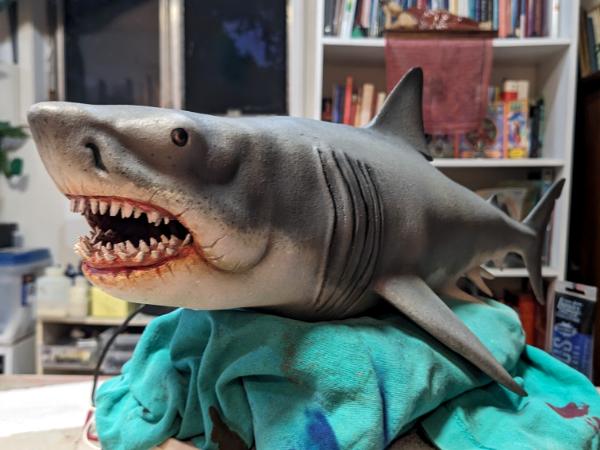  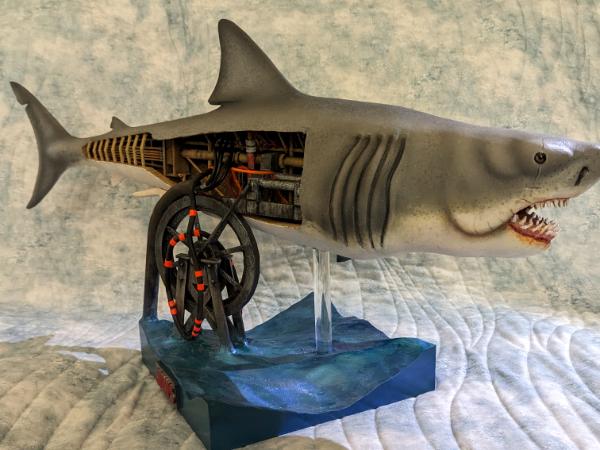  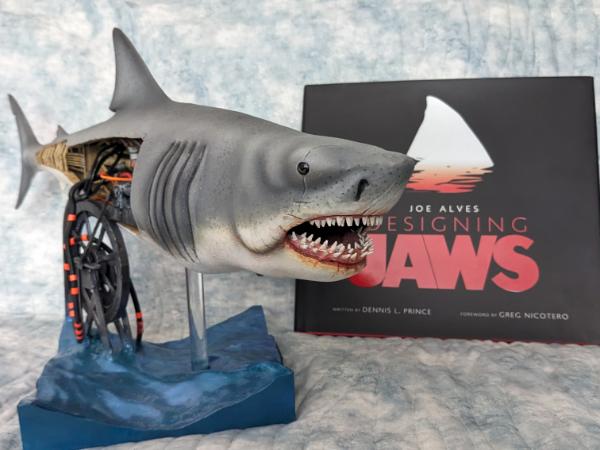 |
Be the first to post a comment.
|
7/4/25 |
Reading "The Kin of Ata Are Waiting for You" (published 1971) felt like stepping into a dream I didn’t know I remembered. Dorothy Bryant’s novel is a quiet, luminous journey, part spiritual allegory, part psychological excavation. It reminded me, in some ways, of "Dances with Wolves", but where that story is rooted in the physical and historical, "Ata" unfolds in the metaphysical, in the realm of dreams and soul. The protagonist, a man broken by the violence and ego of modern life, is drawn into a mysterious society where dreams guide every action and community is sacred. The people of Ata live in deep harmony with the land and each other, not through utopian fantasy, but through discipline, ritual, and profound inner listening. I spent this Independence Day reading it. I mean, the 4th of July, a day meant to celebrate autonomy and self-determination, while immersed in a story that reveres interdependence, humility, and the unseen threads that bind us. The irony wasn’t lost on me: independence in an interdependent, holographic universe. Ata’s world offered a quiet counterpoint to the noise of fireworks and flag-waving, reminding me that true freedom might lie not in separation, but in recognizing that we are all children of the earth. Kin, if you will. The book left me both grounded and disoriented. It’s not escapism; it’s a mirror held up to our fragmented world, and an invitation to remember another way of being. As a keeper of dreams myself, I felt seen by this story. It’s a novel to read slowly, to carry with you, and perhaps to dream with. If "Dances with Wolves" showed us how the heart can be reclaimed through connection with the earth and its people, Ata shows us how the soul can be reclaimed through surrender to the dream. |
Be the first to post a comment.
|
6/29/25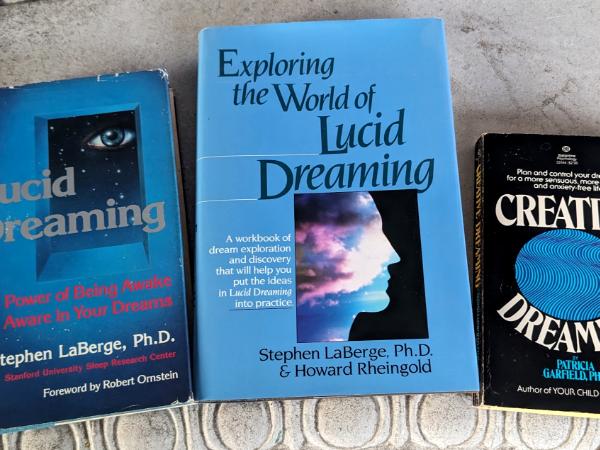 "My joy was hidden in a dream. I didn't know it was there until you set me free"-Lone Justice
"Silent Lucidity" by Queensrÿche found me like a whisper from the cosmos at a time when my soul was seeking ground. I’d just come through a summer of kaleidoscopic highs and shadowed lows—psychedelics had cracked open the heavens and the underworld, and anxiety lingered in the aftermath. In the quiet desperation of late 1990, I wandered into a bookstore searching for a way to make peace with my anxiety during the day and my dreams at night. Lucid dreaming called to me like forgotten medicine, and Stephen LaBerge’s writings became nectar that rewired my path. And then—serendipity. My friend flicked on the TV, and there it was: Queensrÿche’s “Silent Lucidity,” playing like a message from the dreaming universe itself. A song about lucid dreams, cosmic tenderness, and the power of inner healing. It was as if the universe whispered back, “You’re on the right track.”
I recently watched Professor of Rock talk about the song, and this quote struck me to the core: “You know, Silent Lucidity connected with a lot of people at just the right time. It was a song that stretched way beyond Queensrÿche's typical fan base. It was like there was this perfect storm of events that brought Silent Lucidity into the light and touched so many hearts."
That perfect storm? I lived it. And it left a trace on my soul that still glows. To this day, dreams remain my sacred home—a spirituality that bridges daylight clarity and nocturnal wonder. And it all began when one song echoed through the veil.
|
Be the first to post a comment.
|
6/4/25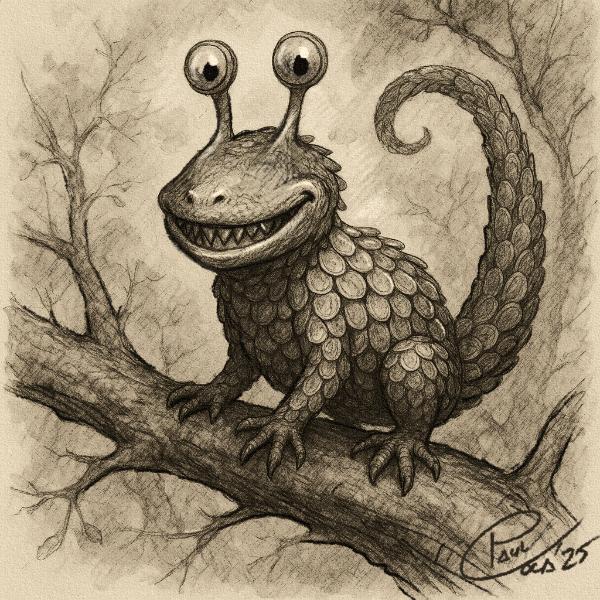 |
The world was shifting beneath my feet—though at the time, I couldn’t quite put my finger on it. Spencer’s Butte, towering over Eugene, Oregon, had always been a place of perspective. A place where you could stand above it all, see civilization laid out like a celestial game board, and pretend you weren’t just another fragile piece in the grand cosmic play. That night, though, I wasn’t just standing above it—I was teetering on its edge, trying to hold onto something that was already slipping through my fingers. Dave, must have seen it in my eyes—that glint of apprehension, the way the stars looked a little too sharp, a little too knowing. “Here,” he said, pressing his Walkman into my hands, like an offering. Aerosmith’s "Sweet Emotion" hummed through the headphones, a song I’d heard a hundred times before, but in that moment, it was medicine. It tethered me, gave my mind a place to land before it could spiral into the unknown. Of course, the real test came on the way down. That’s when the trees turned into tricksters, their branches whispering half-truths, their shadows weaving themselves into something sentient. At one point, I caught sight of a coin flipping through the air—except it wasn’t a coin, not really. At first, it was just an ordinary flicker, catching stray flashlight beams as it tumbled. But as it ricocheted off the branches like a pinball, something shifted. It multiplied, expanding, assembling itself into a presence—grinning like the Cheshire Cat but scaled like some forgotten reptile. Its eyes were perched on stalks, swirling black vortexes within them, each one holding the infinite roll of fate. And in that instant, I understood something unspoken: the universe was less a solid structure and more a playful, ever-shifting puzzle. We pressed forward down the trail, flashlights carving tunnels through the black. The trees leaned in, their skeletal branches flickering in and out of existence in the half-light. Shadows moved with intent, shifting in ways that shadows shouldn’t. Eventually, we reached the city, and I let myself breathe. My companions wandered the UofO campus, their conversation like anchors keeping me from floating off into the unknown. The night stretched toward morning, and in the half-light, the bushes lining the sidewalk became ankle-biters—lashing out, playful yet persistent. I knew they weren’t real. But knowing didn’t erase the sensation; it simply lived alongside it. Back at the house, I found solace in sketching. The lizard-cat, the swirling coins, the strange anatomy of the night—lines and shadows taking form beneath my hands. Something fundamental had changed, but I couldn’t quite name it. Not yet. When the sun rose in full, I was new. Not reborn—nothing so dramatic—but undeniably different. The world was luminous, transient, stitched together in ways I hadn’t considered before. And somewhere in the years to follow, in the chaos of shifting perspectives, I found clarity in lucid dreaming and Buddhism. "Form is emptiness, emptiness is form." Nothing existed in isolation. Everything leaned on everything else—an endless cascade of reflection and connection. The universe, I realized, wasn’t cold and uncaring. It was bejeweled, magnificent—a living, breathing web of interconnected light. And though fear and uncertainty still loomed, they no longer felt like the final truth. And if I kept my eyes open, I could see it shimmering between every moment. |
Be the first to post a comment.
|
12/1/24 |
When we think of trailblazers in the realm of visual storytelling, Robert Abel’s name undoubtedly rises to prominence. Renowned for his pioneering work in computer graphics and special effects, particularly in television commercials, Abel’s influence permeates far beyond the screens of the 1970's and 1980's. His mastery in blending technology with creative vision has subtly, yet profoundly, shaped my own artistic journey and the aesthetic of my books. Robert Abel was a visionary who saw the potential of computer graphics long before it became mainstream. His company, Robert Abel and Associates, produced some of the most memorable TV commercials of the late 20th century. These commercials were not just advertisements; they were art. The seamless integration of vibrant visuals and cutting-edge technology captivated audiences and set a new standard for digital artistry. On a subconscious level, Abel’s work has left an indelible mark on my creative consciousness. The surreal yet cohesive worlds he crafted through his commercials have become a silent muse in my art and writing. His ability to tell a story through a few seconds of mesmerizing visuals taught me the power of concise, impactful storytelling. The vibrant colors, the intricate details, and the fluid motion of his graphics have inspired the visual language I use in my illustrations. There is a certain rhythm and harmony in Abel’s work that I strive to emulate in my own. This influence is particularly evident in my current book project. As I delve into writing and illustrating this new story, I find myself channeling the spirit of Abel’s aesthetics. The way he used light and color to create mood and atmosphere is something I consciously incorporate into my illustrations. The dynamic compositions and the sense of movement in his graphics influence the way I design my scenes, aiming to capture a similar sense of wonder and engagement. In essence, Robert Abel’s work has been a quiet guide, whispering through the corridors of my mind and subtly shaping my creative endeavors. His legacy as a pioneer in digital graphics continues to inspire artists like me, proving that true innovation in art is timeless. As I continue to write and illustrate, I carry with me the lessons learned from studying his groundbreaking work, striving to create art that resonates with the same depth and impact as his did.
|
Be the first to post a comment.
|
11/11/24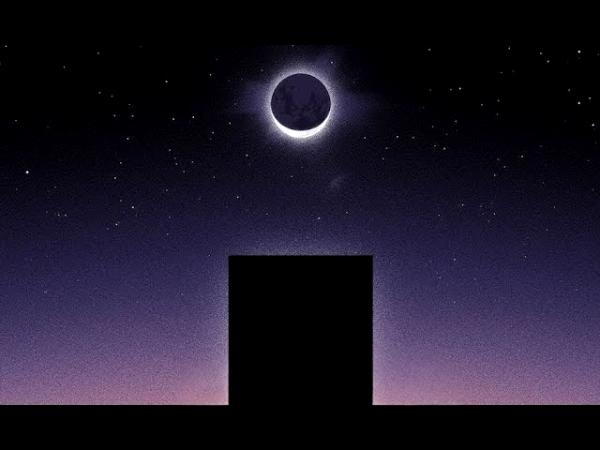 Recently, I revisited Stanley Kubrick's masterpiece, 2001: A Space Odyssey, a film that never fails to provoke deep thought and reflection. As the credits rolled, I found myself pondering the iconic monolith—those mysterious black structures that catalyze leaps in human evolution throughout the film. In the movie, the monoliths serve as a catalyst for significant evolutionary advancements. From the dawn of man to space exploration, each encounter with a monolith sparks a profound transformation. This got me thinking: in our current world, are we in need of another monolithic encounter to propel us forward? Recent events have shown that humanity seems to be at a crossroads. Instead of evolving, there are times it feels like we are regressing. Division, misinformation, and societal challenges paint a picture of a species struggling to find its next evolutionary step. In this context, I can't help but draw a parallel to the "monoliths" we carry around every day—our smartphones. These devices, while powerful tools for communication and information, often serve as modern-day distractions rather than catalysts for progress. They hold immense potential, but how often do we use them to foster true knowledge, connection, and evolution? What we need is a new kind of monolith—an event or breakthrough that encourages us to look beyond our screens and reconnect with the essence of what makes us human. Whether it's through technological innovation that truly enhances our understanding of each other and the universe, or a collective awakening to the importance of empathy and collaboration, the next step in our evolution requires more than just passive consumption of digital content. As I ponder the monoliths of Kubrick's universe, I hope for a future where we find our own catalysts for growth. The tools are in our hands; now we need the vision and willingness to use them wisely. |
Be the first to post a comment.
|
11/10/24Imagine it—Summer 1992 in Portland, a city cradled by forests where golden sunlight filtered through the trees and illuminated the buildings near Powell's Books. I turned the big two-five and fate decides to gift me a night to remember. The scene is set at the Roseland Theater, a cathedral of the gothic sound. My friend and I, two kindred spirits, stepped into that sacred space where music transcends the ordinary. We were there to witness one of my favorite goth musicians, the harbinger of shadow and light, Peter Murphy. The show wasn't just a performance; it was a journey into the depths of the human psyche, a brush with the archetypes that Jung whispered about. Back then, I didn't fully grasp the significance of it all. But as years rolled on, I understood—sometimes to grow, you must delve into the shadowlands. It's in those dark, fertile places that creativity, courage, and infinite possibilities spring forth. We often celebrate the sunlit days of growth, but true nourishment comes when we plunge our roots deep into the gothic soil. It’s there, in the haunting melodies and dimly lit spaces, that we draw up the essence of life, breathe in the air of possibility, and dance to the rhythm of gothic reverie. Being it was my birthday, my friend gifted me a Peter Murphy t-shirt, a talisman of that night. I wore it like armor, carrying the magic of that evening with me. Alas, during a stint at my grandmother's house, the shirt disappeared—likely banished by her, mistaking the dark enchantment for devil magic. But oh, it was magic, the kind that transports you to realms brimming with that darling, dark wonder. Here's to the darkness that nourishes our roots and the light that dances in the shadows.
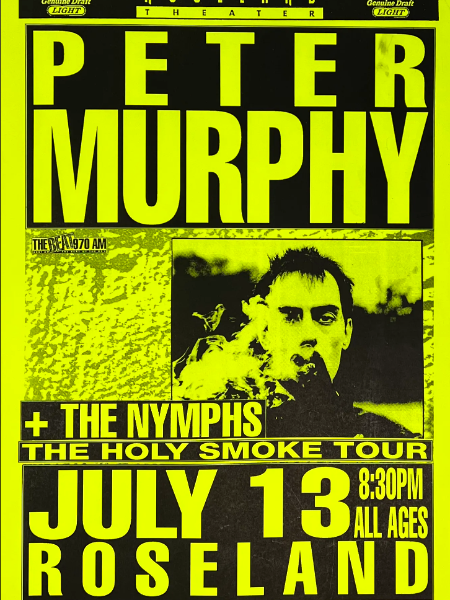
|
Be the first to post a comment.
|
11/6/24Imagine this: Just as a plant, in all its natural splendor, culminates in the blooming of a flower, so too does our psyche unfold in the form of dreams. The plant doesn’t need to be told how to bloom; it simply follows its nature. Similarly, our psyche, in its intricate wisdom, produces symbols in our dreams naturally and effortlessly. Jung saw dreams as the blossoming of our inner world, a manifestation of our deepest feelings, thoughts, and unconscious desires. Each symbol in a dream is like a petal, part of a larger bloom that represents the wholeness of our inner life. Every dream, in this view, is evidence of our mind's continuous process of symbolization—transforming abstract feelings into vivid images and narratives. So, next time you find yourself wandering through the maze of a dream, think of it as your psyche in full bloom, revealing the hidden parts of yourself in the most beautiful and mysterious ways. |
Be the first to post a comment.
|
11/6/24Throughout my life, I’ve explored various spiritual paths, searching for something that resonates deeply with my soul. I grew up immersed in the traditions of Christianity, but over time, I found myself yearning for something more—a philosophy that speaks to the vast, interconnected mysteries of existence.
To me, Christianity felt increasingly like a "dead desert religion"—rigid, dogmatic, and distant from the vibrant, living essence of spiritual exploration. In contrast, the Eastern traditions of Buddhism, Advaita Vedanta, and Taoism have offered me profound insights and a more holistic understanding of life.
Buddhism teaches the power of mindfulness and the liberation that comes from seeing the world as it truly is, free from the illusions of ego and desire. Advaita Vedanta reveals the non-dual nature of reality, encouraging us to see beyond the superficial distinctions that separate us. Taoism celebrates the harmony and flow of the natural world, guiding us to live in accordance with the Tao—the fundamental nature of the universe.
In addition, Jungian psychology has provided me with invaluable tools for personal growth and self-discovery. Carl Jung’s work on archetypes and the collective unconscious has deepened my appreciation for the symbolic and mythological dimensions of the human psyche.
Together, these paths have opened my eyes to a rich tapestry of wisdom and a way of being that feels deeply alive and authentic. They invite me to embrace life’s mysteries with curiosity, compassion, and an open heart.
I share this not to dismiss the beliefs of others, but to express my own spiritual journey and the profound sense of connection and wonder I’ve found in the philosophies of the East.
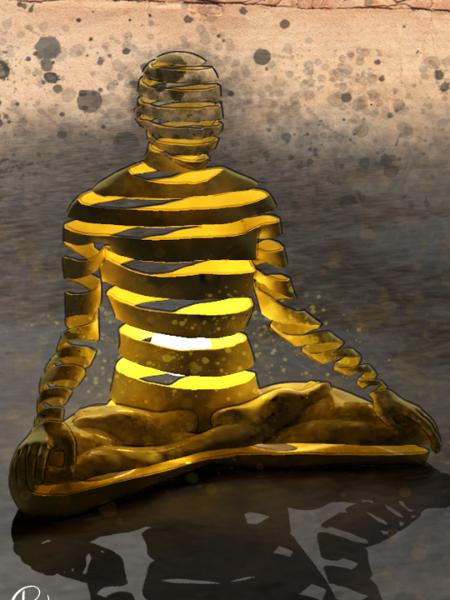 |
Be the first to post a comment.
|
6/28/24There was a time, not too long ago, when I'd step into the social arena like a gladiator armed with self-deprecation. It was my shield, my way of steering the chariot before the lions of judgment could pounce. Especially around the fairer sex, I'd toss out a quip about myself, a preemptive strike of wit, showing I was the maestro of my own shortcomings. As an artist, my brush strokes were bold, my canvas alive with confidence. You'd think such assurance would waltz me through the dance of courtship. But alas, when it came to the gaze of Aphrodite's descendants, I felt more like a sketch than a masterpiece. A history of rebuffs, a skin etched with the adolescent storms of acne, left my self-esteem teetering on a precarious easel. As for many of my comrades, they seemed to navigate these waters with the grace of Casanovas, finding love's harbor quite easily. Meanwhile, I was adrift, battling the squalls of self-doubt. But here's the kicker – the epiphany that washed over me like a gentle summer's rain: our worth isn't a prize to be won in the eyes of others. It's an innate treasure, a birthright that doesn't hinge on the fickle tides of attraction. We're all entitled to stand tall, to claim our space in the pantheon of self-respect. With that in mind, I think it's best we learn to anchor our souls, not in the shallow pools of external validation but in the deep, still waters of self-acceptance. I understand that can be very challenging, my friends, but I'm discovering it's a voyage worth taking 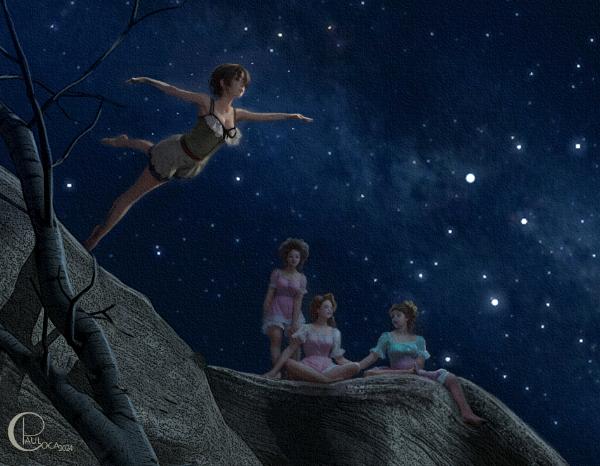 |
Be the first to post a comment.
|
Previously published:All 23 blog entries The myth is the public dream and the dream is the private myth. RSS | Sitemap |
